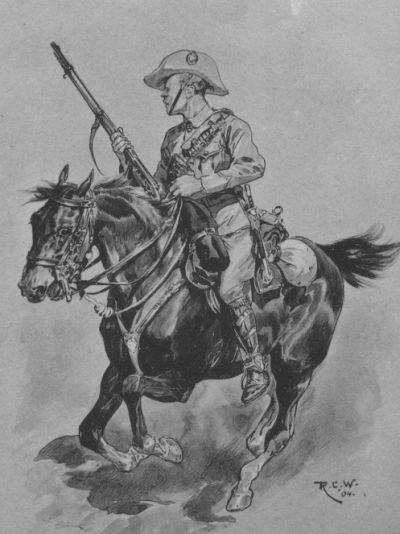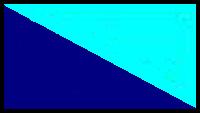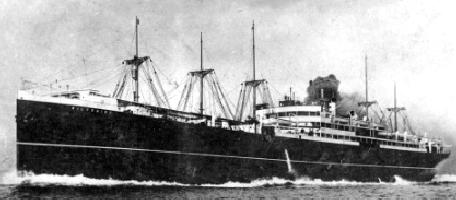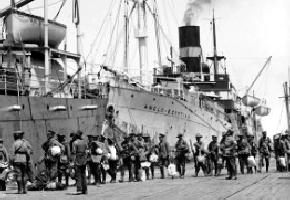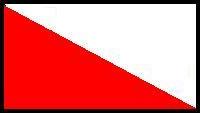Mounted Rifle Tactics.
General Considerations
Definition - Principles underlying tactics - Definitions - Cavalry - Mounted infantry - Mounted riflemen - Mobility and fire effect - Subdivision of subject - The offensive spirit - The bayonet - Missions of mounted riflemen - General Langlois the Boer War - Von der Goltz - Summary.
Tactics, to use the definition contained in a former textbook and followed by the late Colonel Henderson, are "the methods by which a commander seeks to overwhelm an opponent when battle is joined," having previously endeavoured by his strategy to place his own forces, with the eventual combat in his mind, so that they may deal with the enemy with the best probability of defeating him.
Tactics, then, are battle methods, and may be grand tactics, or the art of generalship on a large scale as practised by independent commanders; minor tactics, or the detailed manoeuvring of all arras on the battlefield, which concern all officers of each arm; and, I would add, the special tactics of each arm, for, though the tactics of each arras must be based and developed on the understanding that close combination with other arms is the general mode of their application, they are decided and formed in view of advantages and limitations peculiar, either in degree or nature, to each branch of the combatant forces. Many principles are, of course, common to all tactics, and guide the tactical employment of all arms, but it is only with a constant attention to the advantages and limitations to which I have referred that each can be used with the greatest effect and on sound lines.
These chapters are not put forward with any idea of teaching those who are thoroughly competent judges of the tactics which we shall consider, but with the object of stating the principles which underlie those tactics and their application.
With the material at hand I think we may say that, properly handled, the mounted rifleman of South Africa should be the equal of any soldier of that arm in the world. We must, however, remember that many of the natural conditions which have been factors in the production of the practical frontier soldier of the past are vanishing, or at least diminishing, with a more general civilization, and that the South African citizen soldier of the immediate future will be far less versed in war conditions than his predecessors.
To teach him properly, it is not enough merely to say that such and such a line should be adopted, but he will ask the reason for each feature of the tactics he is called upon to employ, and why these have proved successful. It is therefore essential that those on whom the responsibility of training the citizen troops of South Africa is to rest in varying degree should be ready with arguments to force our points home, and convince the younger soldier that the methods which are recommended are universally admitted to be sound as the result of investigation and experience.
The tendency is to accept the result of successful tactics without taking the trouble to investigate the causes and circumstances which were contributory to the success. Climatic conditions - such as rain, mist, and wind - must be taken into consideration, and it must be decided to what extent such circumstances influenced the course of an action and its consequence. The temper of the troops on either side may have had great influence on the combat. Can we be sure that the troops will always display the same resolution or weakness? Stupidity on the part of an opponent may have had its effect on the good result of a venture. Would it have succeeded had the opposing commander met our attack with different and more effective counter-measures? In short, tactics must be critically analyzed, and then systematically taught on uniform principles, and this means care and thought and study. What follows represents an effort to analyze mounted rifle tactics, and to state the various principles which should govern them.
What is a mounted rifleman? He is not a cavalryman, and he is not a mounted infantryman.
Cavalry are mounted soldiers trained primarily for shock tactics-that is to say, for the charge with an arme blanche. They are also taught fire tactics, but the main tactical action of cavalry, for which the most careful preparation of men and horses alike is necessary, and to which by far the larger portion of their period of training is devoted, is the charge with the lance or sword.
Mounted infantry are foot soldiers mounted on horses to give them increased mobility, which is, and always will be, strictly limited by the fact that they are not thoroughly trained horsemen. The terms of mounted riflemen and mounted infantry are far too loosely applied by military writers, but a mounted rifleman should never allow any one to confuse his arm with mounted infantry. Civilly, but firmly, he should point out that he is the former, and not the latter, for to regard himself as a mounted infantryman is to lose sight of the sole reason of his arm being regarded as distinct from any other.
A mounted rifleman is a horse soldier, enlisted and trained as a mounted man, to whom expert horsemanship is as vital as it is to a cavalryman. His horse is not trained to the perfection of regulated and controlled pace, which is essential to the cavalry (being indispensable to the effective delivery of the charge), and creed only be a well-broken, active, strong animal, which can be led without any difficulty. His horsemanship and horsemastership, however, must be every whit as finished and sound as that of the cavalryman; his weapon is the rifle, and he fights on foot.
Broadly stated, his special advantage is the mobility conferred by expert horsemanship and an active, well-controlled mount. At the same time this may fairly be regarded as his main tactical limitation, for the safety of the horses, which supply his great advantage, and the necessity for always thinking of them in action with the object of maintaining mobility, are frequently serious problems, which govern the whole question of the tactical employment of the arm.
To gauge accurately the potentialities of mounted rifle tactics, the performance of good horsemen, such as the American mounted troops in the Civil. War, and the Republican forces in 1899-1902, should be studied and criticised. I say American mounted troops advisedly, and not cavalry, for, with the exception of a relatively small number, they were not cavalry as I am using the term, nor do they ever meet cavalry in action.
General De Wet says "a Boer without his horse is half a man"; the tactical value of mounted riflemen whenever they are in the same plight (that is to say, when their horses have been taken from them) bears exactly the same relation to their proper fighting value - it is at least halved.
Mobility and fire effect sum up the essence of mounted rifle tactics. I would always place the former before the latter, as the two are inseparable, and the fact that this is so is sometimes overlooked in the excitement and interest aroused by the fire fight. It will be found that if mobility is always insisted upon, many doubts as to the right course to pursue will vanish. The action of mounted riflemen, in whatever circumstances they may find themselves in war, must always take full advantage of their great mobility, either in actually using it or retaining the power of doing so, or fall short of what might be achieved.
I propose to consider in subsequent chapters:- Attack, defence, protection, night work, and reconnaissance, when we will go into details more fully. Here it will suffice to say that having, by our training, assured mobility by producing confident horsemen; active, bold, and well-trained horses; and a good system of caring for them; we should never forget the fact that mobility is all that distinguishes a mounted rifleman from an infantryman, and that it should therefore be the constant endeavour of a mounted rifleman to make the best use of it.
There is one most important matter to which I should like to refer. Offensive action is essential to effective tactics, and a desire for the offensive must animate any force which is to be successful in war. We may all have our views as to the value of shock action by cavalry in these days, but we must all admit that the cavalry spirit is the expression of the spirit of war; "the first-born son of war," Clausewitz calls it. It does not matter whether two hostile armies face each other equipped with every modern warlike appliance that human ingenuity has devised, or whether two men propose to settle a quarrel with nature's weapons; let one general or adversary realize that his opponent is mainly concerned to save his troops from slaughter or his skin from damage, and the former will at once take liberties, and, ignoring chances of retaliation by the latter, will defeat him. The spirit of the offensive is necessary to every combatant arm.
The "march, fight, and pursue" of Napoleon, then "move quickly, strike vigorously, and secure the fruits of victory" of Stonewall Jackson, mean, if they mean anything, that it is the force which is inspired by the desire to strike its opponents, and not that which is chiefly concerned to avoid being struck, which wins battles. As Field Service Regulations say, "The action of a force which is content with warding off the enemy's blows is not considered as 'an aspect of the battle." The artillery of all armies has over and again manifested its offensive and self-sacrificing spirit; the cavalry lives for the charge; the infantry, after establishing a dominant fire, looks to the assault with the bayonet.
"What," ask critics, "is the equivalent of this offensive spirit in other arms, this desire to close with the enemy and do him harm, in the final object of tactical action by mounted riflemen? Is there not a danger that, in the absence of an understanding that close grips are aimed at, the offensive spirit, which we all admit to be indispensable to any efficient combatant arm, may be absent in the case of mounted riflemen?"
This question is put, and has been put to me, and I think that those of us who have experience of mounted rifle tactics will admit that the danger exists, and that the horse may become liable to be regarded more as a means of moving rapidly to another position, if that occupied becomes uncomfortable, than of quickly pushing forward and endeavouring to get to close range.
It has been suggested that stress laid on the use of the bayonet may supply an incentive to offensive action. I do not agree with this. We find an addition to the new South African Mounted Riflemen Training to the following effect -
"Though the use of the bayonet to the extent to which it is employed by infantry will probably be extremely rare in the case of mounted riflemen, the latter should be expert in its use on foot. For example, in such work as small expeditions by night, for which the mobility of the mounted rifleman specially suits him, the bayonet will be of the greatest value, and, as it is a weapon carried by mounted riflemen, they should be expert in handling it."
That the mounted rifleman should be expert in the use of his bayonet must be insisted upon, but that the weapon will be used, except very rarely, to the extent of delivering bayonet charges on foot on a large scale, is most unlikely. Its use in defence I will touch upon in its place. If the hostile force is composed of mounted riflemen, it will hardly wait to be charged, and if it is infantry, it can probably be better dealt with by fire at close range. Again, a force of mounted riflemen, which becomes committed to a bayonet charge dismounted, is engaged on work which will seriously impair its power of pursuit, which must be retained if the fruits of victory are to be assured. It will probably involve making the horses immobile (i.e., with less than one man to four horses), which should only be done very grudgingly, and in exceptional circumstances, as it means loss of mobility. Our own regulations say that the deliberate form of attack will seldom be undertaken by mounted riflemen, and even the British Yeomanry and Mounted Rifle Training, 1912 (which, it is well to remember, has to consider European conditions of warfare), says nothing of the bayonet in the deliberate attack. The bayonet, therefore, is not enough to produce the offensive spirit in mounted riflemen, though it may contribute to it.
What are the main tactical duties of mounted riflemen? South African Mounted Riflemen Training says that the chief duties of the arm are as follows:
To seize promptly for dismounted action successive important positions from which to deliver an effective fire.
To reinforce rapidly at a critical time other arms which may be overmatched, or assist them in making sure of success.
To carry out enveloping movements.
Reconnaissance and scouting.
To form rallying points for cavalry in the case of a reverse.
Pursuits.
To cover retreats of other arms during a retirement.
All these demand offensive action, so that the tactical employment of mounted riflemen will almost invariably be offensive.
Why, then, does this danger exist? I think it is because the vital importance of keeping the horses in a more or less constant position of handiness to their dismounted riders in action is insufficiently recognised. I have often seen horses of mounted riflemen engaged in dismounted fire action in war remain for hours in the same spot, without communication with the firing line, which had moved out of sight and out of the ken of those who were in charge of the horses. I have also constantly noticed on peace training with citizen forces that the horses are similarly left, and brought up hurriedly and in confusion, because the situation suddenly demanded their presence.
The following extract from the Memorandum on Training, 1911-12, of the Australian Military Forces is of interest here:
"The disposal of led horses was often faulty, and attempts were not made to keep the horses as close up to the dismounted men as possible, taking advantage of cover not necessarily immediately in rear of the dismounted troops; long advances were made on foot, resulting in a loss of mobility."
If the close and constant association of mobility and fire is rigidly insisted upon, the position of led horses will become variable as the fight develops, almost automatically, and the knowledge that the horses are, as a matter of course, as near as possible to their riders in action will go far to counteract the desire to get back to them, in the fear that they may have been left too far behind, which tends to destroy aggressive action.
Fire from the saddle, and the development of what is called, wrongly, as I believe, the “mounted rifleman charge," to both of which I shall refer later, will tend in the same beneficial direction, and, finally, as it is well put in the British Yeomanry and Mounted Rifle Training, 1912:
“Commanders must endeavour to foster in their men an aggressive spirit, and they must teach them that a determined enemy will not be beaten or driven off his ground merely by long range fire."
In Lessons from Two Recent Wars, a book translated into English by the General Staff in 1909, General H. Langlois says in his introduction:
“The false doctrines which sprang up after the Anglo-Boer War have deeply affected our (the French) officers. Our officers are beginning to lose the spirit of the offensive."
Here is the expression of the fear that the tactics of mounted riflemen may tend to the defensive and to the detriment of bold and vigorous action. General Langlois adds, however, in criticising the action of Nicholson's Nek, which was settled by the rifle fire of dismounted mounted riflemen, that success was achieved "because a continuous fire covered the advance of a rush, and, finally, and above all, because that fire was extremely accurate." He goes on to say, with reference to this attack, which was practically frontal, " an attack can be made, and successfully, given a superiority of fire. This superiority of fire can be gained not only by a superior number of rifles, but also by good shooting and by determination." This is the secret of offensive action - determination. Though the tactical action of the mounted rifleman and his weapon are not, when compared with the equivalents in the case of other arms, eloquent in themselves of offence, I see no reason why consistent teaching of the need of the offensive spirit should not produce it in the arm, and why the teaching should not be reflected in vigorous action on the battlefield.
As von der Goltz says, "The elements of the offensive are rapidity and vigour." The rapidity is in the power of the mounted rifleman, and surely his training can be such that he shall be vigorous.
In conclusion, we may state generally that the tactics of mounted riflemen depend for their successful application on mobility conferred by horsemanship, which enables them to make- up for their numerical inferiority of rifles in the firing line by surprising the enemy and by the rapid seizure of the positions; on accurate shooting; and, as in the case of every combatant arm, determination to adopt vigorous and offensive action.
